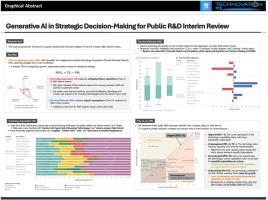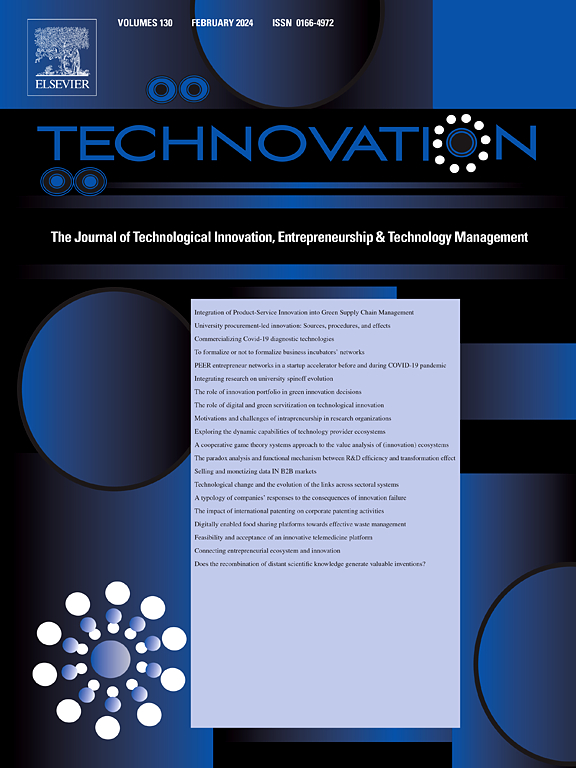弥合成熟度与期望差距:公共研发中期审查战略决策中的生成人工智能
IF 10.9
1区 管理学
Q1 ENGINEERING, INDUSTRIAL
引用次数: 0
摘要
公共研发中期评审面临着与可扩展性、评估者偏见和多方利益相关者判断不一致相关的持续挑战。生成式人工智能(Gen AI)有可能通过提高效率和标准化来缓解这些限制,但它的部署也会带来算法偏差和透明度丧失等风险。这需要一个系统的框架来支持战略决策和指导负责任的采用。本研究引入了成熟度-期望差距(MEG)框架,该框架捕捉了利益相关者对人工智能成熟度的看法与实际技术状态之间的不一致。技术接受模型等现有模型未能反映新兴技术的时间和制度动态。为了解决这个问题,该研究将感知成熟度的专家调查数据与基于机器学习的文献分析相结合,以计算24个评估标准的期望分数。结果表明,MEG在利益相关者群体之间存在显著差异,MEG值越高,对新一代人工智能采用的信心越低,这突出了框架在解释战略采用决策方面的效用(RQ1)。此外,MEG支持对评估领域进行诊断分类,确定一致的领域(例如,财务状况)和不一致的领域(例如,决策制定),从而支持分阶段和风险意识部署战略(RQ2)。MEG框架为管理期望-能力一致性提供了一个结构化的视角,扩展了技术采用理论,同时支持公共部门评估系统中Gen AI的负责任集成的战略决策。本文章由计算机程序翻译,如有差异,请以英文原文为准。

Bridging the maturity-expectation gap: Generative AI in strategic decision-making for public R&D interim review
Public R&D interim reviews face persistent challenges related to scalability, evaluator bias, and inconsistency in multi-stakeholder judgment. Generative AI (Gen AI) has the potential to mitigate these limitations by enhancing efficiency and standardization, yet its deployment also introduces risks such as algorithmic bias and loss of transparency. This calls for a systematic framework to support strategic decision-making and guide responsible adoption. This study introduces the Maturity–Expectation Gap (MEG) framework, which captures the misalignment between stakeholder perceptions of AI maturity and the actual technological state. Existing models such as the Technology Acceptance Model fail to reflect the temporal and institutional dynamics of emerging technologies. To address this, the study combines expert survey data on perceived maturity with machine learning-based literature analysis to compute expectation scores across twenty-four evaluation criteria. Results show that MEG significantly varies across stakeholder groups, and that higher MEG values are associated with lower confidence in Gen AI adoption, highlighting the framework's utility in explaining strategic adoption decisions (RQ1). Furthermore, MEG enables diagnostic classification of evaluation domains, identifying areas of alignment (e.g., Financial Health) and misalignment (e.g., Decision-Making), thereby supporting phased and risk-aware deployment strategies (RQ2). MEG framework offers a structured lens for managing expectation–capability alignment, extending technology adoption theory while supporting strategic decision-making for the responsible integration of Gen AI in public-sector evaluation systems.
求助全文
通过发布文献求助,成功后即可免费获取论文全文。
去求助
来源期刊

Technovation
管理科学-工程:工业
CiteScore
15.10
自引率
11.20%
发文量
208
审稿时长
91 days
期刊介绍:
The interdisciplinary journal Technovation covers various aspects of technological innovation, exploring processes, products, and social impacts. It examines innovation in both process and product realms, including social innovations like regulatory frameworks and non-economic benefits. Topics range from emerging trends and capital for development to managing technology-intensive ventures and innovation in organizations of different sizes. It also discusses organizational structures, investment strategies for science and technology enterprises, and the roles of technological innovators. Additionally, it addresses technology transfer between developing countries and innovation across enterprise, political, and economic systems.
 求助内容:
求助内容: 应助结果提醒方式:
应助结果提醒方式:


